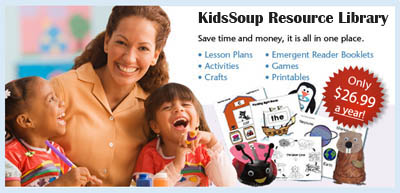The importance of instilling the concept of...

Children will love the rhyming, rollicking fun of this story about a hapless duck stuck in the mud who calls out to other animals that share his marshland home; "Help! Help! Who can help?" he asks. As you read this story aloud, engage children by asking questions and defining difficult vocabulary before, during, and after reading. Here, we share a few ideas:
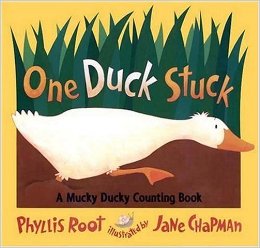
Book: One Duck Stuck
Kindergarten Common Core Standards
Literature: Key Ideas and Details
RL.K.1 With prompting and support, ask and answer questions about key details in a text
Literature: Range of Reading and Level of Text Complexitiy
RL.K.10 Actively engage in group reading activities with purpose and understanding
Before Reading:
Display the book cover and read the title, pointing to each word. Lead a brief discussion that allows children to make some preliminary predictions about what will happen in the story.
Explain that the book takes place in a marsh, which is an area of land that is very wet and soft. It is covered by tall grasses and other plants that grow along and across patches and streams of water.
Tip: Print some photographs of a real white duck and real-world marshes, glue them to construction paper backgrounds, and post them in a science or sensory area for children to observe and respond to. Verify that the duck must ask for help in order to get out of his predicament. Write the words "Help! Help! Who can help?" on sentence strips and place them in a pocket chart. Teach children the refrain. Encourage them to chant the words each time the duck calls out in the story.
During Reading:
As you read, define difficult vocabulary words as they come up (see the list below for some child-friendly definitions). Let children try to predict the kind of animal that will show up next before you turn the page. Then, point to each word on the pocket chart as children chant the refrain. Explain that the animals in the story are all animals that live in real-world marshes.
One Duck Stuck Vocabulary
After Reading:
Have children compare their original predictions with the actual outcome in the story. Encourage children to make self-to-text connections by asking the following questions:
Let children share their favorite parts of the story and why. Then, let children stand and shake out their sitting and listening muscles with this related movement activity.
Waddle Waddle Duck
Adapted by Jolanda Garcia, KidsSoup, Inc.
Waddle, waddle, waddle duck (Put hands on hips.)
Waddle to the pond (Waddle in place.)
Paddle, paddle, paddle duck (Flutter hands back and forth.)
Paddle round and round (Turn around.)
Tail up, head down,
you are a funny little duck. (Put hands behind and flick up and put head down.)
Waddle, waddle, waddle duck (Put hands on hips and waddle like a duck.)
Waddle in to the muck (Waddle in place.)
Plop, plop, stuck in the muck (Lift right and left leg high, hands to the sides, and tilt head.)
Splosh round and round (Lift legs slowly and turn around.)
Jump out, (Jump up.)
you are a funny little duck (Waddle in place with hands on hips.)
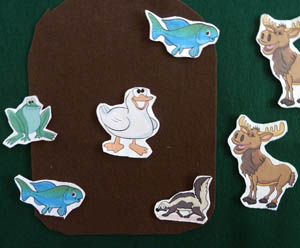
One Duck Stuck Felt Story Pieces
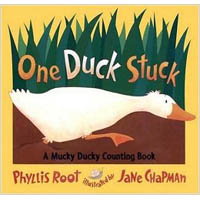 Preschool Activities: |
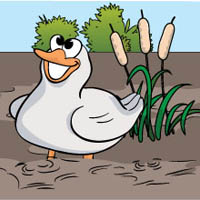 Preschool Activities: |
| One Duck Stuck Literacy Activity | If I Were A Little White Duck Circle Game |
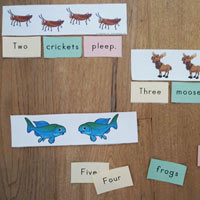 Preschool Activities: |
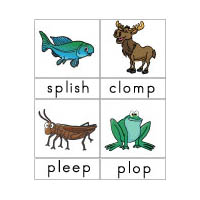 Preschool Activities: |
| One Duck Stuck: Retelling Story with Simple Sentences | One Duck Stuck Animal Sounds Circle Game |
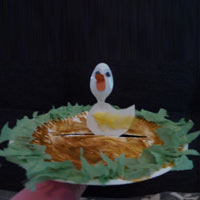 Preschool Activities: |
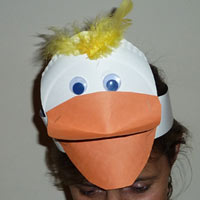 Preschool Activities: |
| Duck in Muck Puppet Craft | Duck Headband |
KidsSoup Resource Library
